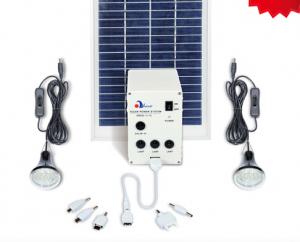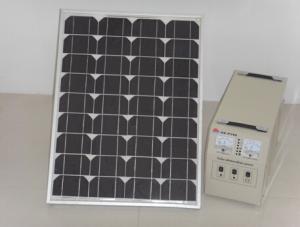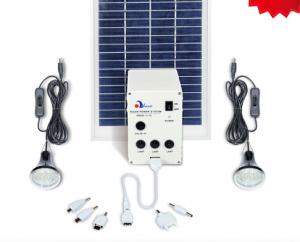Solar Mounting Spare Parts Inter Clamp
- Loading Port:
- China Main Port
- Payment Terms:
- TT or LC
- Min Order Qty:
- -
- Supply Capability:
- -
OKorder Service Pledge
OKorder Financial Service
You Might Also Like
Introduction of our company
We are the first solar racking system developer in China, who committed to solar racking system R&D, producing and marketing for about 10 years. We were the OEM for Sunpower, and are one of the largest rooftop solar racking system supplier in Japan and Australia now.
We persists in taking the path of specialization, scale and internationalization development. We import the international advanced technology equipment for manufacturing , assembling and testing. Frontier solar racking system is with own patents. The dynamic wind resistance reliability of our racking system can up to 270km/h. Therefore, superior product quality with more than 25 years' durability and perfect after-sale service have earned us a high reputation in PV industry worldwide.
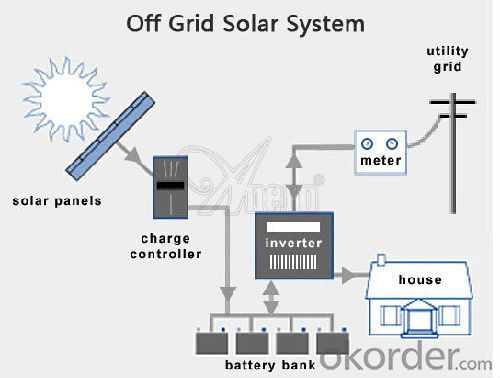
Working Principle of Solar Roof System
The stand alone Solar Home System is an off-grid solar system which uses batteries to store the solar energy. Stand alone solar system solutions design for those who are not able or willing to connect to electricity grid.
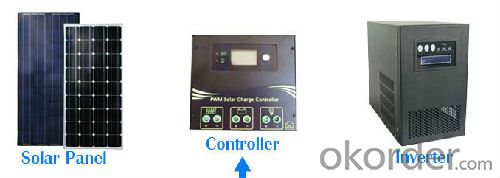
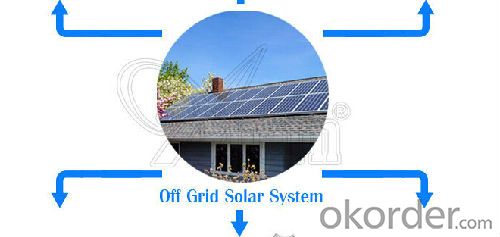

Specification of Solar Home System
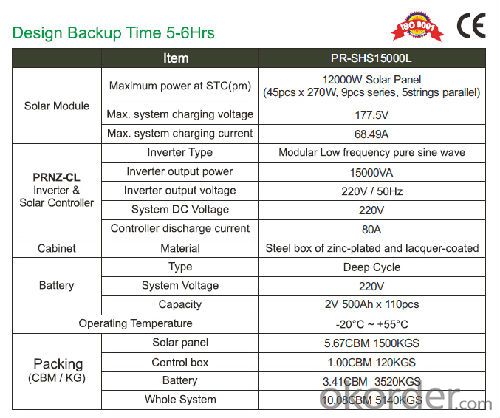
Product Features of Solar Home System
Off grid solar power system is mainly used for application with relatively-small power consumption, and the areas have no grid network coverage, or grid power is unstable or outage condition.
It’s composed of solar panels, hybrid solar inverter, battery bank, solar panel mounting racks, and other accessories required fora complete home solar power system.
The battery bank gives a stable power output to the solar inverter which converts DC to AC to power loads, and provides power backup in rainy or cloudy days.
The solar panels generate electricity at daytime and charge the battery bank.
The off grid home solar power system provides grid power bypass in case of battery power shortage when sunshine is not enough.
All the off grid home solar power system configurations are worked out by scientific calculation and design.
Advantage of Our Solar Home System
1. solar power system operation can automatically control and manual control modes.
2. Easy installation, energy saving (saving coal and petroleum resources, reduce pollution / noise emissions); do not need to lay long-distance transmission lines, do not build large substation, system stability, less maintenance, low maintenance cost, daily / each month / year electricity clearly visible, and can be entered into the computer record.
This solar system configuration is for reference. It can be adjusted based on actual condition and requirement. All parts have been tested and proven in actual operation with enough reliability and stability. It’s suggested to source whole system as a pack from us to guarantee the system compatibility.
Terms and Conditions
1. Trade terms: FOB Shanghai
2. Payment terms: 30% T/T, balanced before shipment/ LC at sight before shipment. Actual Terms can be negotiated for big order.
3. Package: Exported standard package suitable for tough handling and sea transport.
4. Delivery: Goods to be ready within 10~30 days depending on order quantity.
5. Warranty: 10 years for solar panel, 2 years for controller/inverter/battery.
FAQ
Q: Could you introduce the background of your company?
A: We are a Group corp. with 1GW capacity in China, which is Okorder’s registered VIP Supplier, possess Financial Service from Okorder.com.
Q: Required mainly certificates (CE&IEC/TUV/RoHS)?
A: Our products are certificated by CE RoHS, IEC, ISO, TUV, UL etc.
Q: Your main exported market is?
A: Main markets of our products is: South-east Asia, Mid-east, Arica, East Europe and Latin America.
- Q:Are there any risks of electrical malfunctions or failures during extreme weather events with solar energy systems?
- Yes, there are some risks of electrical malfunctions or failures during extreme weather events with solar energy systems. Severe weather conditions such as hurricanes, tornadoes, hailstorms, or heavy snowfall can potentially damage solar panels, inverters, or electrical wiring, leading to system failures. Additionally, lightning strikes can pose a risk to solar energy systems, potentially causing damage or complete failure. However, proper installation, regular maintenance, and adhering to industry standards can help mitigate these risks and ensure the resilience of solar energy systems during extreme weather events.
- Q:Can a solar energy system be installed in a residential community with homeowners' association rules?
- Yes, a solar energy system can be installed in a residential community with homeowners' association (HOA) rules. However, the specific rules and regulations regarding solar panel installation may vary depending on the HOA. In some cases, HOAs may have restrictions on the type, size, or location of solar panels. To install a solar energy system in a residential community with HOA rules, homeowners would typically need to follow a set of guidelines or seek approval from the HOA. This may involve submitting an application, providing detailed plans and specifications of the system, and obtaining the necessary permits. Many HOAs have recognized the benefits of solar energy and have adopted guidelines that are supportive of solar panel installations. Some HOAs have even revised their rules to make it easier for homeowners to install solar energy systems. It is important for homeowners to review their specific HOA rules and guidelines, and engage in communication with the HOA to understand the requirements and obtain the necessary approvals. Overall, while it is possible to install a solar energy system in a residential community with HOA rules, it is essential to review the specific guidelines and seek approval from the HOA to ensure compliance and a smooth installation process.
- Q:Can solar energy systems be installed in areas with high snowfall?
- Yes, solar energy systems can be installed in areas with high snowfall. However, it is important to consider the impact of snow accumulation on the efficiency and performance of these systems. Proper design and installation techniques can help minimize the impact of snow on solar panels, such as tilted mounting angles, snow guards, and regular snow removal. Additionally, advancements in technology have led to the development of snow-shedding coatings and self-cleaning systems that can further enhance the productivity of solar energy systems in snowy regions.
- Q:Can solar energy systems be used for powering sports stadiums or arenas?
- Yes, solar energy systems can definitely be used for powering sports stadiums or arenas. These systems can be installed on rooftops, parking lots, or surrounding areas to generate clean and sustainable electricity. The large surface area of stadiums and arenas provides ample space for solar panels, allowing them to generate a significant amount of energy. Moreover, the high energy demands of these venues make solar energy an attractive and cost-effective solution. Many sports stadiums around the world have already implemented solar energy systems to reduce their carbon footprint and reliance on traditional energy sources.
- Q:Can solar energy systems be used for powering manufacturing facilities?
- Yes, solar energy systems can absolutely be used for powering manufacturing facilities. In fact, many manufacturing facilities worldwide are already harnessing the potential of solar energy to meet their power needs. Solar energy systems, such as photovoltaic (PV) panels, can be installed on the rooftops or surrounding areas of manufacturing facilities to generate clean and renewable electricity. This electricity can then be used to power various processes and equipment within the facility. There are several advantages to using solar energy systems for manufacturing facilities. Firstly, solar energy is a renewable and sustainable source of power, meaning that it does not deplete natural resources or contribute to climate change. By utilizing solar power, manufacturing facilities can significantly reduce their carbon footprint and contribute to a greener and more sustainable future. Secondly, solar energy systems can provide a stable and reliable source of electricity. This is especially important for manufacturing facilities that require a consistent and uninterrupted power supply for their operations. By generating their own electricity through solar power, these facilities can reduce their dependency on the grid and avoid potential disruptions or outages. Furthermore, solar energy systems can also help manufacturing facilities reduce their energy costs in the long run. While the initial installation costs of solar panels may be relatively high, the operational costs are significantly lower compared to traditional energy sources. Once the solar energy system is in place, the sunlight that powers it is free, allowing manufacturing facilities to save money on their electricity bills over time. It is worth noting that the feasibility of using solar energy systems for powering manufacturing facilities may depend on various factors, including the size of the facility, available space for solar panel installation, and the energy requirements of the manufacturing processes. However, with advancements in solar technology and the decreasing costs of solar panels, more and more manufacturing facilities are finding it economically viable and environmentally responsible to switch to solar energy systems. In summary, solar energy systems can be effectively utilized for powering manufacturing facilities, offering numerous benefits such as sustainability, reliability, and cost savings. As the world moves towards a cleaner and more sustainable energy future, solar power presents a compelling solution for manufacturing facilities seeking to reduce their environmental impact while maintaining a dependable source of electricity.
- Q:Are there any risks of theft or vandalism with solar energy systems?
- Solar energy systems do come with some risks of theft or vandalism. Valuable solar panels and equipment used in these systems can attract thieves who may try to sell them on the black market. Moreover, since solar energy systems are usually installed in remote or isolated areas, they are more susceptible to theft as they may not be easily monitored. Vandalism is also a concern as solar panels can be intentionally damaged or destroyed by individuals with a grudge against the owner or simply for the sake of causing damage. This can result in financial loss and disruption of energy production. To mitigate these risks, homeowners and businesses can take various precautions. Installing security measures like surveillance cameras, motion sensors, or alarms can deter theft or vandalism. Placing panels in visible and easily accessible locations can also make them less appealing to potential thieves. Additionally, marking the panels with unique identifiers can make it harder for thieves to sell them. Insurance coverage is another crucial consideration to safeguard against theft or vandalism. Many insurance companies offer specialized policies that cover solar energy systems, providing compensation in case of theft or damage. In summary, although there are risks of theft or vandalism associated with solar energy systems, these risks can be minimized through preventive measures and insurance coverage. It is important for owners of solar energy systems to be aware of these risks and take appropriate steps to safeguard their investment.
- Q:Can a solar energy system be installed on a building with a flat roof?
- Certainly, it is possible to install a solar energy system on a building that has a flat roof. Actually, when it comes to solar panel installations, flat roofs are often preferred due to their accessibility and ideal exposure to sunlight. By utilizing a weight-based system called ballast, solar panels can be directly mounted on the flat surface of the roof without the need for any roof penetrations. Moreover, flat roofs offer abundant space to arrange the solar panels in an optimal way, thereby maximizing energy production. Consequently, flat roofs serve as an outstanding choice for the installation of solar energy systems and can make a significant contribution to the generation of clean and sustainable electricity.
- Q:Can solar energy systems be used for electric vehicle charging stations?
- Yes, solar energy systems can be used for electric vehicle charging stations. Solar panels can generate electricity that can be used to charge electric vehicles, making them a sustainable and environmentally-friendly option for powering EV charging stations.
- Q:How does the efficiency of solar panels vary based on the angle and orientation?
- The efficiency of solar panels may vary depending on the angle and orientation they are positioned in. The performance of solar panels can be significantly impacted by the tilt angle at which they are set. It is ideal to position solar panels at an angle that allows them to receive maximum sunlight exposure throughout the day. The highest efficiency of solar panels is achieved when they are oriented perpendicular to the sun's rays. This means that solar panels should directly face the sun without any obstruction or shading. When solar panels are properly angled, they can capture the maximum amount of sunlight, resulting in higher energy production. The orientation of solar panels also plays a vital role in their efficiency. In the Northern Hemisphere, solar panels should generally face south to receive the most sunlight. Facing south allows panels to receive sunlight for the longest duration during the day. However, in the Southern Hemisphere, solar panels should face north for optimal efficiency. Improperly angled or oriented solar panels can experience a decrease in efficiency. If panels are tilted too steeply or too shallow, they may not receive the maximum amount of sunlight. Similarly, if solar panels are not facing the correct direction, they may not efficiently capture sunlight. It is important to note that solar panels can still generate electricity even if they are not perfectly angled or oriented. However, their efficiency will be lower, resulting in a lower energy output. Factors such as temperature, dust, and shading from nearby objects or trees can also affect the efficiency of solar panels. To maximize the efficiency of solar panels, it is advisable to seek professional consultation. Experts can assess the specific location and provide guidance on the optimal angle and orientation for the panels. By ensuring that solar panels are correctly angled and oriented, individuals can maximize energy production and enjoy the benefits of solar power.
- Q:What is the expected return on investment for a solar energy system?
- The return on investment (ROI) for a solar energy system can vary based on several factors, such as the initial cost, location, available incentives, and energy usage. Typically, solar energy systems are expected to yield a positive ROI over their lifespan. Installing a solar energy system involves a significant upfront investment, including expenses for solar panels, inverters, and installation. However, the decreasing costs of solar technology in recent years have made the initial expense more affordable. The location of the solar energy system is crucial in determining the expected ROI. Areas with higher solar irradiance and longer sunshine hours tend to generate more electricity, resulting in a higher ROI. Additionally, net metering policies that allow excess electricity to be credited back to the owner can further boost the ROI. Government incentives and subsidies can have a significant impact on the expected ROI. Many countries provide tax credits, grants, and rebates to promote the adoption of solar energy systems. These incentives reduce the initial cost and expedite the payback period, thus enhancing the overall ROI. Furthermore, the energy usage of the property plays a critical role in determining the expected ROI. Higher electricity consumption offers more opportunities for the solar energy system to offset utility bills, resulting in greater savings and an improved ROI. While the specific ROI can vary, studies indicate that solar energy systems typically recoup their costs within 5 to 10 years and continue to generate free electricity for several decades. This extensive period of energy production allows for substantial savings on utility bills and a positive ROI over the system's lifetime. In summary, investing in a solar energy system can provide long-term financial benefits, including reduced electricity costs, potential revenue from excess electricity generation, and increased property value. Conducting a comprehensive evaluation considering the aforementioned factors is crucial in determining the expected ROI for a solar energy system in a specific scenario.
1. Manufacturer Overview |
|
|---|---|
| Location | |
| Year Established | |
| Annual Output Value | |
| Main Markets | |
| Company Certifications | |
2. Manufacturer Certificates |
|
|---|---|
| a) Certification Name | |
| Range | |
| Reference | |
| Validity Period | |
3. Manufacturer Capability |
|
|---|---|
| a)Trade Capacity | |
| Nearest Port | |
| Export Percentage | |
| No.of Employees in Trade Department | |
| Language Spoken: | |
| b)Factory Information | |
| Factory Size: | |
| No. of Production Lines | |
| Contract Manufacturing | |
| Product Price Range | |
Send your message to us
Solar Mounting Spare Parts Inter Clamp
- Loading Port:
- China Main Port
- Payment Terms:
- TT or LC
- Min Order Qty:
- -
- Supply Capability:
- -
OKorder Service Pledge
OKorder Financial Service
Similar products
New products
Hot products
Hot Searches
Related keywords
